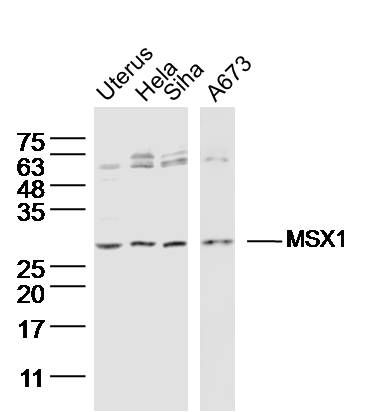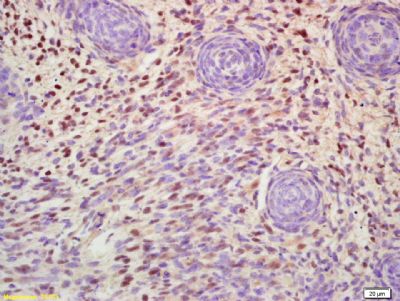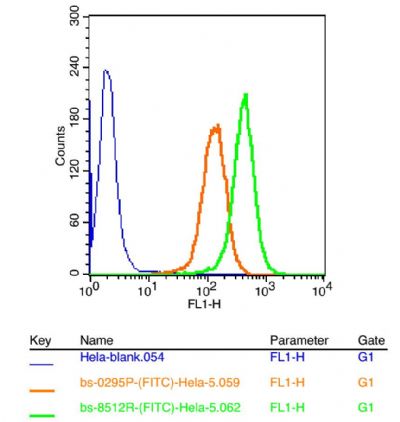Sample:
Utreus (Mouse) Lysate at 40 ug
Hela Cell (Human) Lysate at 40 ug
Siha Cell (Human) Lysate at 40 ug
A673 Cell (Human) Lysate at 40 ug
Primary: Anti- MSX1 (SL8512R) at 1/300 dilution
Secondary: IRDye800CW Goat Anti-Rabbit IgG at 1/20000 dilution
Predicted band size: 31 kD
Observed band size: 31 kD
Tissue/cell: mouse embryo tissue; 4% Paraformaldehyde-fixed and paraffin-embedded;
Antigen retrieval: citrate buffer ( 0.01M, pH 6.0 ), Boiling bathing for 15min; Block endogenous peroxidase by 3% Hydrogen peroxide for 30min; Blocking buffer (normal goat serum,SLC0005) at 37鈩?? for 20 min;
Incubation: Anti-MSX1 Polyclonal Antibody, Unconjugated(SL8512R) 1:200, overnight at 4掳C, followed by conjugation to the secondary antibody(SP-0023) and DAB(SLC0010) staining


